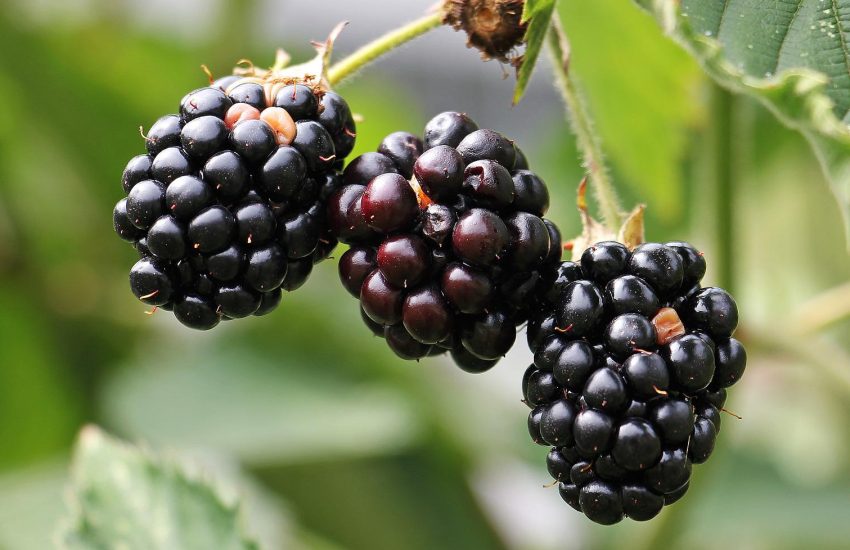Where Does a Peanut Grow: Origins and Cultivation Process
Peanuts are a popular snack enjoyed by many people around the world. Despite their popularity, not everyone knows where peanuts come from and how they grow. In this article, we will explore the origin and growth of peanuts to provide a better understanding of this beloved legume.
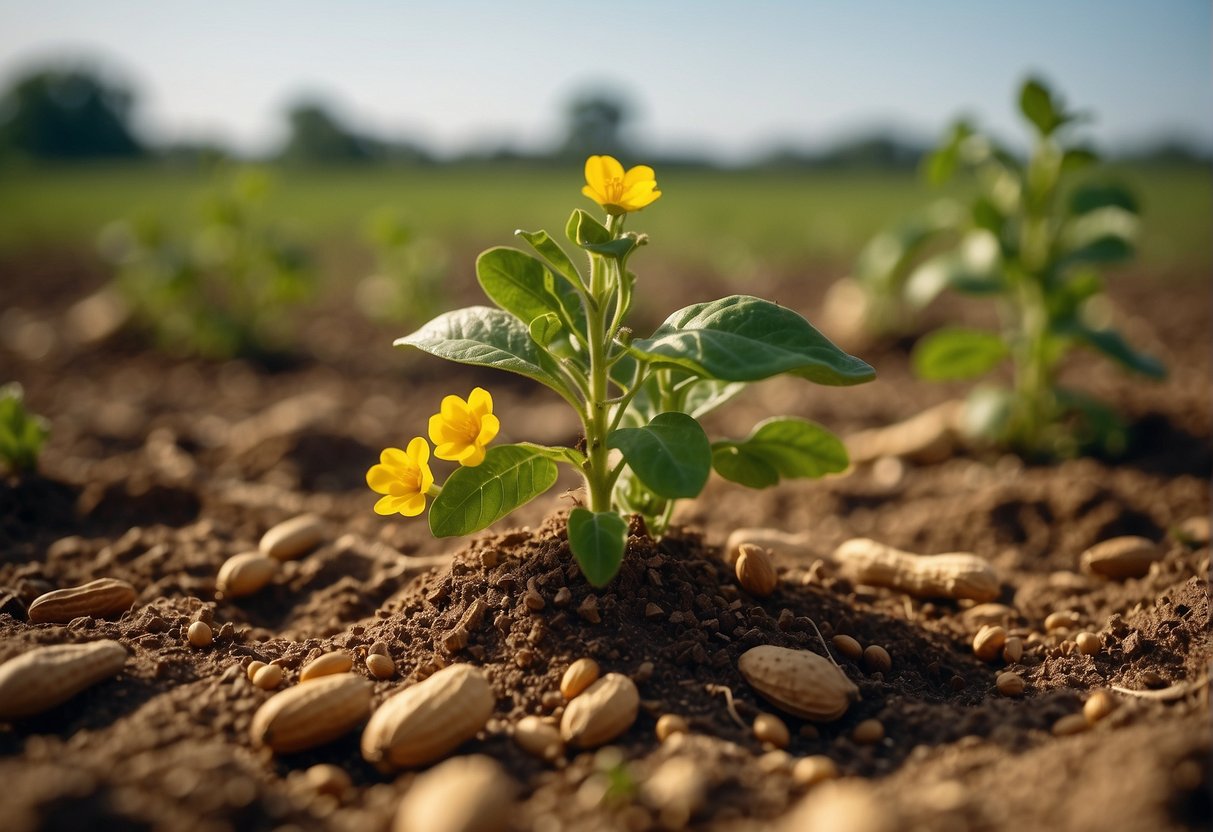
Peanuts are not actually nuts, but rather a type of legume that is grown underground. The peanut plant, which can grow up to two feet tall, produces yellow flowers that eventually turn into pods containing the peanuts. These pods grow underground, making it difficult to harvest the peanuts without damaging them.
Peanuts are a great source of protein and nutrition, making them a popular snack choice for those looking to maintain a healthy diet. With their unique growing process and nutritional benefits, it’s no wonder that peanuts have become a staple in many households. In the following paragraphs, we will delve deeper into the growth process of peanuts and the benefits they provide.
Peanut Plant Characteristics
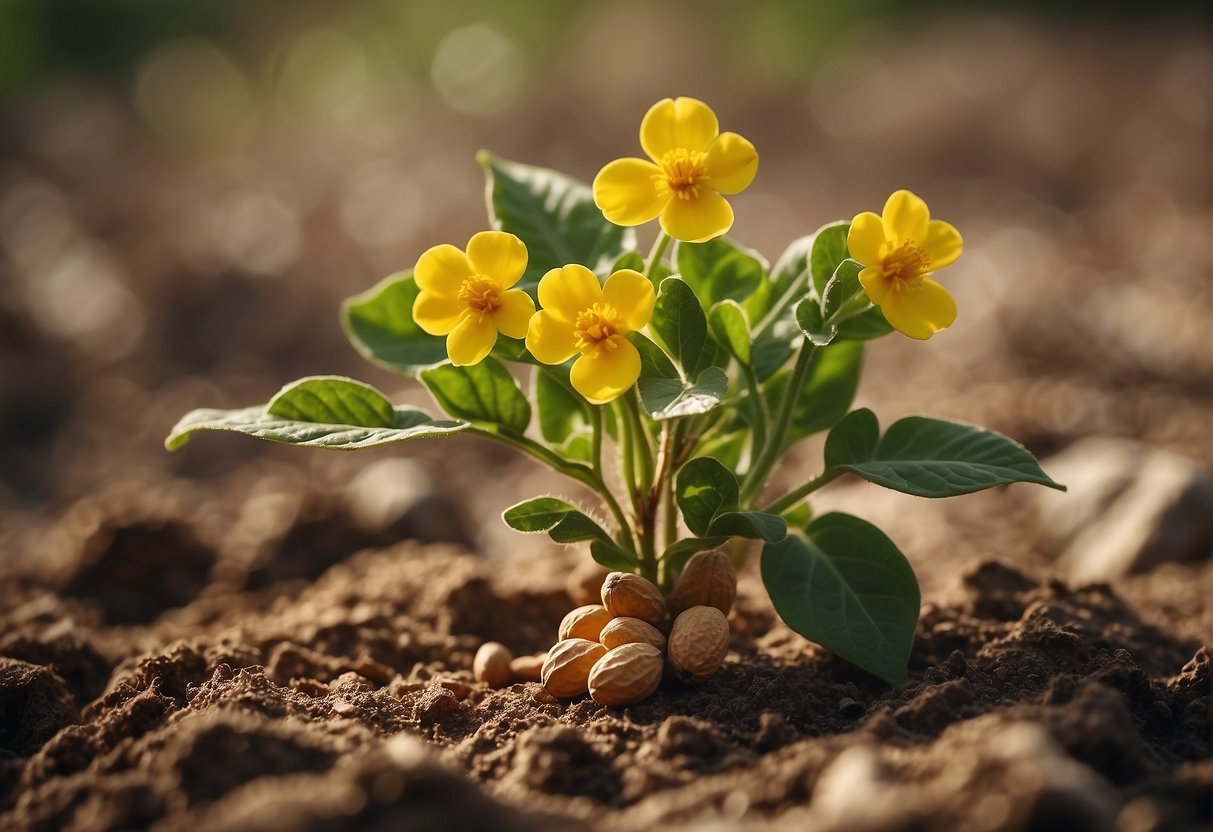
Botanical Profile
The peanut plant, scientifically known as Arachis hypogaea, belongs to the legume family, Fabaceae. It is an annual herbaceous plant that grows up to 1-2 feet tall and spreads up to 3 feet wide. The plant has a taproot system with numerous lateral roots that grow up to 1-2 feet deep. The stem of the peanut plant is slender and hairy, and it can grow erect or sprawl along the ground.
The leaves of the peanut plant are pinnately compound, with four leaflets arranged opposite each other. The leaflets are ovate, with a pointed tip, and they have a smooth surface with a glossy texture. The flowers of the peanut plant are small, yellow, and pea-like, and they bloom above the ground before the plant produces fruit.
Optimal Growing Conditions
The peanut plant thrives in warm, sandy soils with good drainage and a pH range of 5.8 to 6.2. It requires a minimum of 120 frost-free days to grow and produce a mature crop. The plant requires ample sunlight and moderate rainfall, with an average of 20-40 inches of rainfall per year.
Peanut plants are sensitive to frost and do not tolerate temperatures below 32°F. They also require a minimum temperature of 60°F for optimal growth. The best time to plant peanuts is in late spring or early summer, after the danger of frost has passed.
In conclusion, the peanut plant is a legume that grows up to 2 feet tall and spreads up to 3 feet wide. It requires warm, sandy soils with good drainage and a pH range of 5.8 to 6.2. The plant thrives in ample sunlight and moderate rainfall, with an average of 20-40 inches of rainfall per year. The best time to plant peanuts is in late spring or early summer, after the danger of frost has passed.
Cultivation and Harvesting
Planting and Lifecycle
Peanuts are grown in warm climates with well-drained soil. The seeds are planted in rows and covered with soil. The plant requires a warm temperature between 70-80°F and frost-free days to grow. The root system of the peanut plant is shallow and requires good soil moisture and aeration. A well-fertilized soil with nitrogen and calcium is essential for the growth of the plant.
After planting, the peanut plant sprouts and grows. The plant has a lifecycle of approximately four months. During this time, the plant produces flowers that develop into pods containing the peanut seeds. The peanut plant requires good soil temperature and water for optimal growth.
Harvesting Techniques
Harvesting of peanuts is done when the pods are mature and ripe. The pods are dug out of the ground and left to dry for a few days. The dried pods are then threshed to separate the seeds from the pods. The yield of the crop depends on the quality of soil, water, and temperature. The yield can range from 1,500 to 4,000 pounds per acre.
Peanuts are susceptible to pests and diseases. To prevent this, the plants are sprayed with pesticides and fungicides. The use of fertilizers is also essential for the growth of the plant. The peanut plant requires a well-balanced nutrient supply to produce high yields.
In conclusion, peanut cultivation requires a warm climate, well-drained soil, good soil moisture, and aeration. The plant has a shallow root system and requires good soil temperature and water for optimal growth. Harvesting of peanuts is done when the pods are mature and ripe. The yield of the crop depends on the quality of soil, water, and temperature.
Global Peanut Production
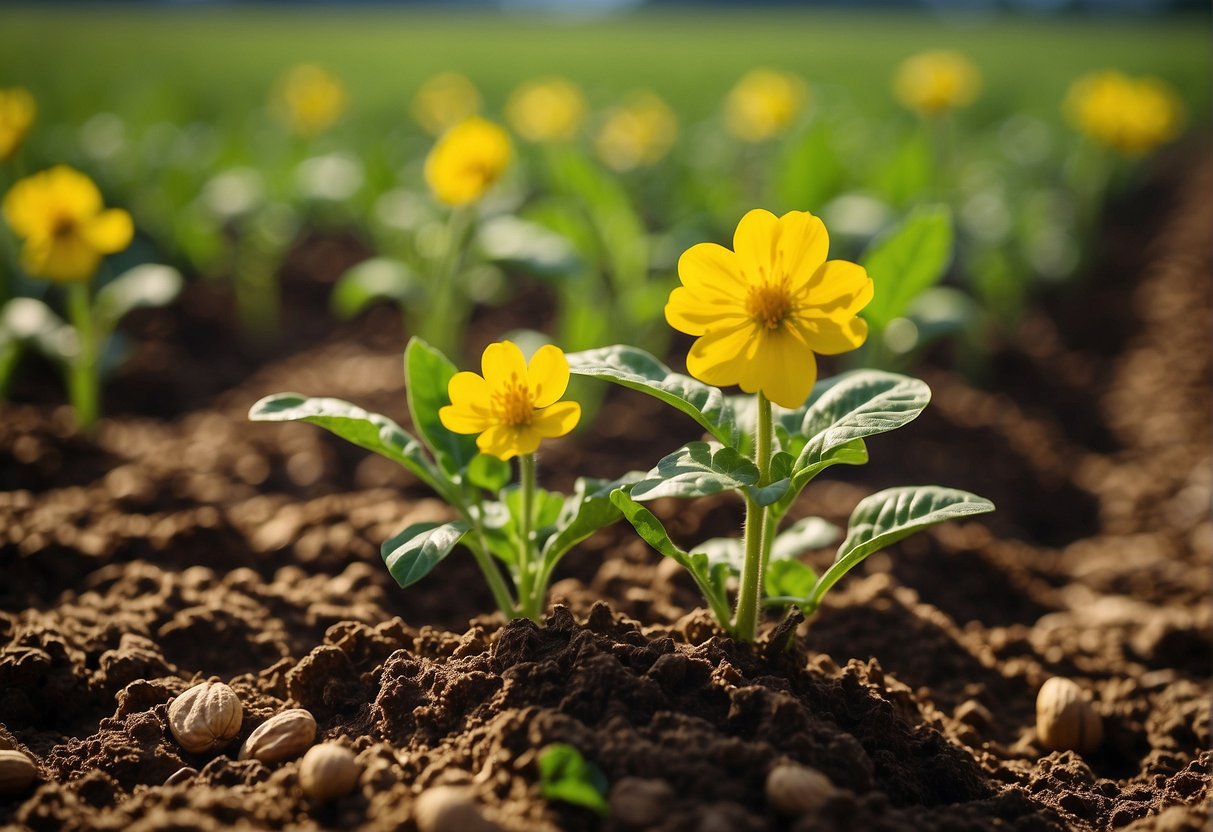
Peanuts, also known as groundnuts or goobers, are an important crop in many countries around the world. They are grown primarily for their oil-rich seeds, which are used in a variety of food products, including peanut butter, candy, and snacks.
Leading Peanut Producing Countries
The top peanut producing countries in the world are China, India, and the United States. In 2022, China produced approximately 17 million metric tons of peanuts, while India produced around 7.5 million metric tons. The United States, specifically states like Virginia, Texas, Florida, North Carolina, Alabama, and Georgia, produced approximately 2.5 million metric tons of peanuts in the same year.
Other major peanut producing countries include Nigeria, Sudan, Senegal, Argentina, and other countries in Africa and South America. In these regions, peanuts are an important crop for both commercial and subsistence farmers.
Peanut Industry and Trade
The peanut industry is a major contributor to the global economy, with billions of dollars in trade each year. The National Peanut Board in the United States is a key organization that supports research, marketing, and education related to peanuts.
In addition to food products, peanuts are also used for animal feed and in some cultures, they are used for medicinal purposes. The cultivation of peanuts requires specific growing conditions, including well-drained soil and warm temperatures.
Overall, the global peanut production is a critical industry that supports millions of people around the world.
Peanuts in Diet and Culture
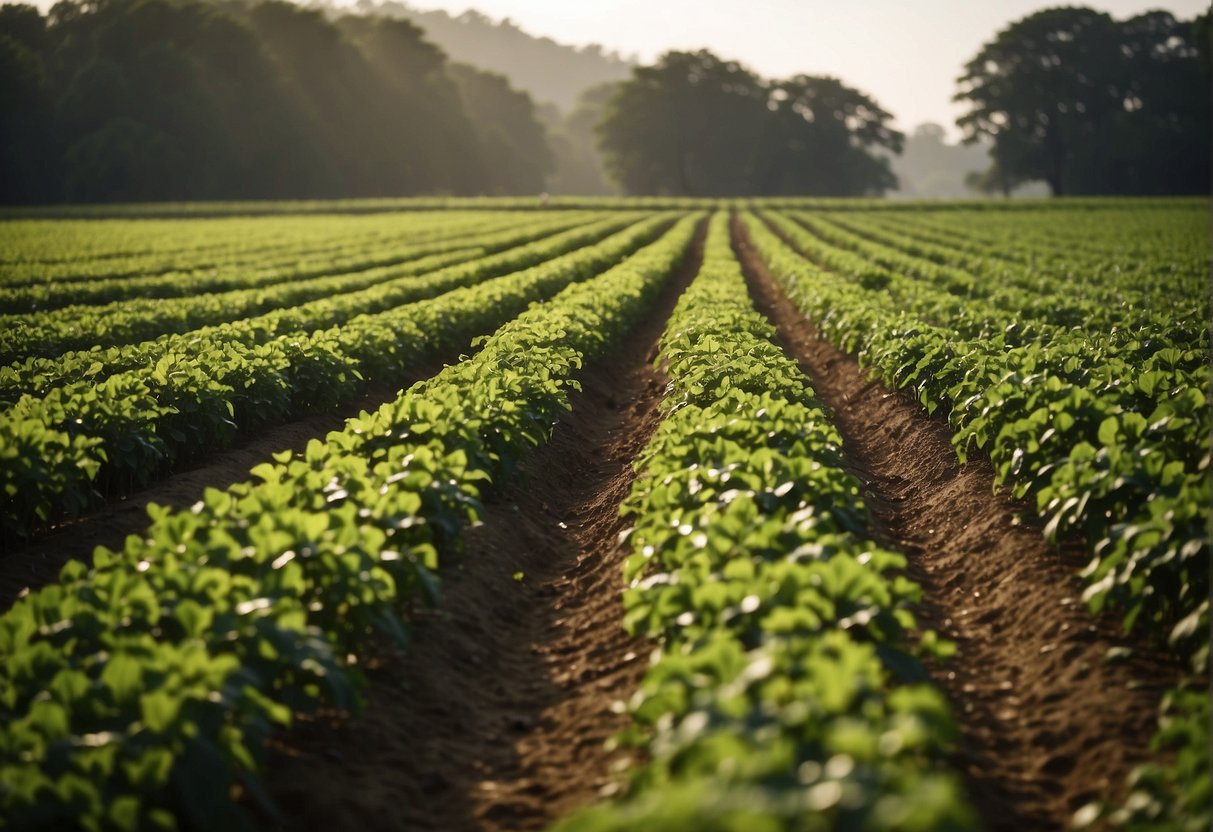
Nutritional Benefits
Peanuts are a great source of nutrition and are often included in the diet of many people worldwide. They are a good source of protein, fiber, and healthy fats. According to the USDA, a serving of peanuts contains 7 grams of protein, 3 grams of fiber, and 14 grams of fat, of which 80% is unsaturated.
In addition to being a good source of nutrition, peanuts also provide a range of health benefits. They are known to help reduce the risk of heart disease, lower cholesterol levels, and improve blood sugar control.
Culinary Uses
Peanuts are a versatile food that can be used in a variety of culinary applications. They are often eaten as a snack, roasted or boiled, and salted or unsalted. Peanut butter, made from ground peanuts, is a popular spread that is used in sandwiches, smoothies, and baking.
Peanuts are also widely used in cooking, particularly in Asian cuisine. They are used as a base for sauces, such as satay sauce, and are added to stir-fries and curries. In the Southern United States, peanuts are often used in desserts, such as peanut butter pie and peanut brittle.
While peanuts are the most common variety, there are other types of peanuts, such as Spanish peanuts and runners. Other nuts, such as walnuts, pecans, and almonds, are also popular for their nutritional value and culinary uses.
Overall, peanuts are a nutritious and versatile food that can be enjoyed in a variety of ways.
Frequently Asked Questions
How are peanuts harvested?
Peanuts are harvested mechanically by specialized equipment that digs up the entire plant, including the roots, and shakes them to remove the peanuts. The plants are then left to dry in the sun before being threshed to separate the peanuts from the rest of the plant.
What is the process of peanut cultivation and harvesting?
Peanuts are typically grown in sandy soil that is well-drained. The seeds are planted in rows and covered with soil. Once the plants have emerged, they are thinned to ensure that each plant has adequate space to grow. The plants are then watered regularly and fertilized as needed. Once the peanuts have matured, they are harvested and processed.
Which countries are the largest producers of peanuts?
The largest producers of peanuts are China, India, and the United States. Other significant producers include Nigeria, Indonesia, and Sudan.
How long is the growing cycle for peanuts?
The growing cycle for peanuts is typically around 120-150 days, depending on the variety and growing conditions. The plants are usually planted in the spring and harvested in the fall.
What is the botanical classification of peanuts?
Peanuts are members of the legume family, Fabaceae. They are classified as Arachis hypogaea.
Are peanuts unique in their growth habit compared to other nuts?
Yes, peanuts are unique in their growth habit compared to other nuts. Unlike most other nuts, which grow on trees, peanuts grow underground. They are also a type of legume, whereas most other nuts are not.


